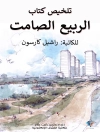Mary Austin’s ‘The Land of Little Rain’ is a profound exploration of the arid landscapes of the American Southwest, blending evocative prose with vivid imagery to illuminate the relationship between the natural world and human existence. Austin employs a lyrical style that mirrors the rhythms of the desert, interweaving her observations of flora, fauna, and geological formations with rich cultural reflections on the lives of the indigenous peoples and early settlers. The book stands as a significant contribution to American regional literature, capturing the unique spirit of the landscape and its inhabitants while also reflecting the environmental consciousness of the early 20th century. A trailblazer in her sensitivity to the environment, Mary Austin was deeply influenced by her upbringing in California and her immersion in Native American culture. A keen observer of both nature and humanity, her experiences led her to advocate for the preservation of the wilderness, making her a crucial figure in the early conservation movement. Through her literary work, Austin sought not only to document her surroundings but to foster a deeper appreciation for the delicate balance of life within the ecosystems she so passionately described. This book is highly recommended for readers interested in environmental literature, American history, and the poetic potential of the natural world. Austin’s exquisite prose invites readers to reconnect with the land, prompting reflection on the enduring relationship between humanity and nature. As a beautifully crafted meditation on the Southwestern landscape, it resonates with anyone seeking to understand the intricate ties that bind us to our environment.
Yazar hakkında
Mary Austin (1868-1934) was a prolific American writer renowned for her insightful depictions of life in the American Southwest. Born Mary Hunter Austin on September 9, 1868, in Carlinville, Illinois, she was a key figure in early 20th-century Western literature. Austin moved to California with her family in her early twenties and quickly became enchanted by the desert landscape, a fascination that profoundly influenced her writing. Her best-known work, ‘The Land of Little Rain’ (1903), is a classic collection of essays that celebrates the vast, arid spaces of the Mojave Desert and the complex interplay of its indigenous plants, animals, and human inhabitants. Written in evocative, lyrical prose, the book helped establish Austin as a significant voice in American literature and environmental writing. She drew upon Naturalism and regionalism in her literary style, with particular emphasis and respect paid to the cultures and wisdom of Native American peoples. Throughout her career, Austin advocated for feminist and Indigenous rights, intertwining her progressive views with her literary pursuits. She published over thirty books during her lifetime, including novels, plays, essays, and poetry, consistently reflecting a deep commitment to place and social issues. Austin’s work remains an important part of the American literary canon, and she is often cited for her contributions to cultural regionalism and ecological awareness in literature.












